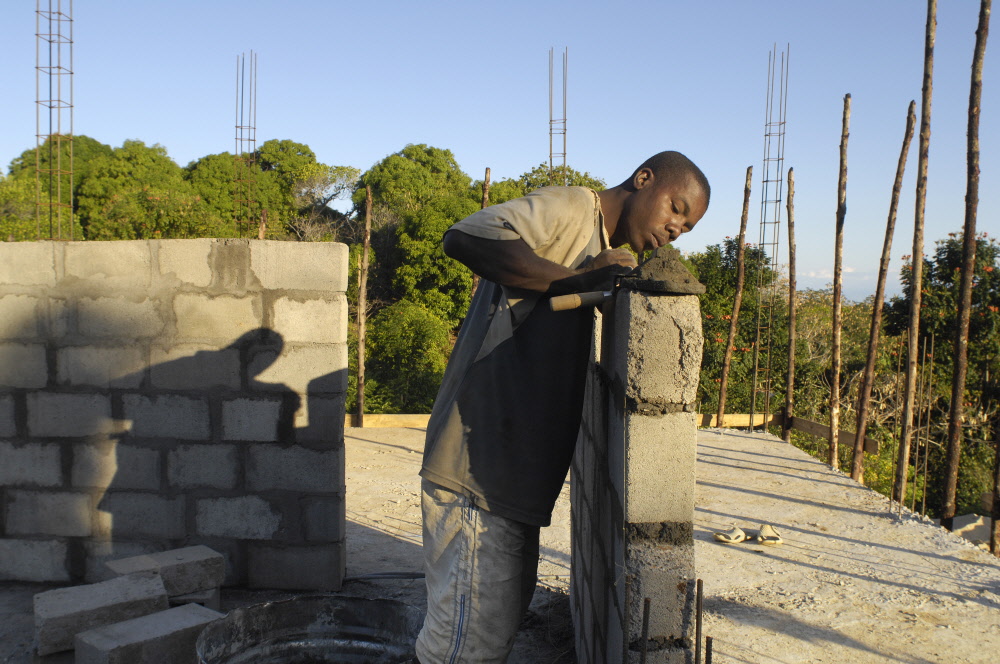UNOPS, the United Nations Office for Project Services, has put out an open call for investors and partners to co-design and back large-scale sustainable infrastructure projects in “emerging and frontier markets”.

In short
- UNOPS through its unit S3i is the only UN agency able to invest directly in infrastructure projects.
- It calls for investors with a track record in leveraging market capital at scale, ideally upwards of the $1bn mark.
- S3i’s global renewable energy portfolio has a yield of 8-15% and its affordable housing portfolio returns between 15% and 25%.
Frontier markets are seen as challenging environments where the risk-reward calculations need a calm hand. This was put to Nan Li Collins, Director of Infrastructure Investments at S3i, the group responsible for Sustainable Investments in Infrastructure and Innovation within UNOPS.
Since January, S3i has built a pipeline of infrastructure projects and a solid working base from which to expand its operations and reach.
She says the idea now is to recruit “like-minded technical and financial partners” with experience handling serious sums of money in a range of fields, from renewable energy to major construction and innovation projects.
Financial institutions, fund managers and other money-market players capable of contributing to S3i’s planned sustainable infrastructure projects are clearly in that target audience.
Strong track record in leveraging capital
“We’re appealing to profiles who have a track record in leveraging market capital at scale, ideally upwards of the $1bn mark, to address the critical infrastructure needs in developing countries globally,” Li Collins says.
The November call for proposals [pdf] – and prominent ‘wanted ad’ in The Economist – both stress that environmental, social, and governance (ESG) considerations will be key to the fund’s mandate, and that fund managers would be expected to “either have strong ESG capabilities or be open to developing them with UNOPS.”
It is a big opportunity and indeed an even bigger task, Li Collins admits, so UNOPS S3i has broken the call down into meaningful and more easily tracked priorities covering direct investments in different aspects of affordable housing, healthcare, and renewable energy projects.
S3i expects to work closely with would-be partners to establish an “impact management framework” for the fund, including defined targets and a verifiable approach to impact tracking aligned to the UN’s Sustainable Development Goals (SDGs).
The idea is not to impose principles of responsible investment (PRI) or any particular industry standard of impact. “We’re not dictating how they establish their credentials, just that partners have a ‘quality and impact’ mindset, or they’re willing to work with us to build one as a tangible contribution to the SDGs,” Li Collins explains.
Closing the development financing gap
Every year, the world comes up way short on the development assistance needed for essential services like clean water and electricity, and more broadly to reduce hunger and poverty, improve health and education and act on climate.
A prominent gap has been identified in the SDG focused on boosting innovation and infrastructure. Between 2015 and 2030, an estimated $89tn is needed for sustainable infrastructure development alone, according to World Bank estimates.
Now with Covid-19 the goal posts have shifted. The annual SDG financing gap in developing countries could increase by as much as $1.7tn (or 70%) from 2020 onwards.
Trending and blending for ‘good returns’
The growing interest in impact investing has opened the door for new investor profiles and pathways that go beyond ‘good returns’ and enter the realm of ‘returns for good’.
More than ever, Li Collins confirms, new kinds of investments in sustainable infrastructure are needed to close that funding gap and achieve the SDGs 2030 Agenda; innovations in technology but also financial mechanisms to mitigate the risk of investing in such large, long-term projects.
Innovations like “blended finance with concessional and first-loss arrangements” have to be on the table, Li Collins stresses, because they allow investors with even quite different objectives and risk-return appetites to reach their targets side-by-side.
Some projects, sectors and even countries “are just less bankable on first look,” she adds, so S3i needs to be a bit expeditionary with financial arrangements to meet longer-term objectives. But for now, she reveals, “some investors find these more exotic arrangements overly complicated and often time-consuming.”
Overcoming mental tripwires
As the only UN entity able to invest directly in infrastructure projects, UNOPS S3i says it has a unique position, combining a global network of offices, broad-based partnerships, and insights into local governance, policies and operational conditions.
Li Collins points out this can help to anticipate potential risks, but also to find opportunities, “such as policy incentives and even free land in the case of affordable housing projects in frontier markets.”
In its ad in The Economist S3i elaborates on how it is already helping to break down barriers to private-sector investing in long-term development initiatives by showing that good financial returns are possible while at the same time having a “positive social, environmental and economic impact.”
Li Collins says S3i’s global renewable energy portfolio has a yield of 8-15% and the affordable housing portfolio between 15% and 25%.
On the impact side, she says their Indian ESG/impact team has provided capacity building for the project on the ground, with new environmental, health and safety, and gender mainstreaming training programmes initiated, and more opportunities for local communities, especially women.
There is a mental tripwire in dealing with major infrastructure projects in these markets, suggests Li Collins: “Risks go with the territory, so we’re keen to hear from partners with a risk appetite and solid ESG reflexes to work with us and overcome this barrier by delivering financial and social impact in different frontier markets over longer timeframes.”






